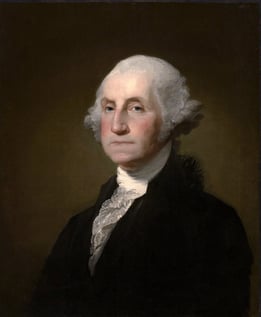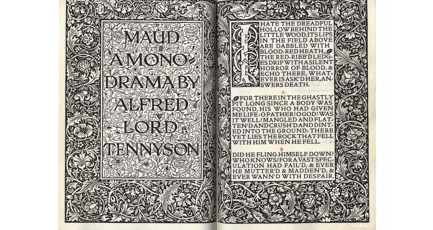Condition. Binding. Completeness. These are all relatively easy to understand concepts in the rare book world when judging the value of a piece. But what about provenance? What is provenance? Why is it so important? Why does it impact the value of a book in such a significant way? These are the questions rare book enthusiasts need to ask as they come across rare or unique volumes where the term provenance is bandied about as a crucial indicator as to why a book is valued in such a way. And confusing though it can be, once understood, provenance adds an interesting layer of complexity to a volume’s value and place in the rare book landscape.
 To help novice—and even more experienced book collectors—understand the place provenance has in determining the value of rare books, we’ll first define the term and then discuss some of the most important elements of provenance in rare book collecting and why collectors should take note of those elements when evaluating a book on their own.
To help novice—and even more experienced book collectors—understand the place provenance has in determining the value of rare books, we’ll first define the term and then discuss some of the most important elements of provenance in rare book collecting and why collectors should take note of those elements when evaluating a book on their own.
Defining Provenance
While a concrete definition of provenance can vary slightly from collector to collector, the most commonly accepted definition refers to the record of ownership of a book or manuscript. This can also include the journey a book or manuscript has undertaken throughout the course of it’s life, passing from owner to owner, collector to collector, or even renowned author to renowned author. Essentially, provenance is a historical record of a certain volume in terms of its custody which can be documented and authenticated in a number of ways.
Provenance can take several forms, including:
Ownership by a famous author. Imagine for a moment if George Washington owned a copy of a certain book and that ownership could be authenticated and verified. No matter the title or subject matter of the book, the fact that it was owned by Washington himself can significantly increase the value and rarity of the volume.
Place of origin. Was a certain book printed in a historical place in the literary world? At a critical or historical time? Was the book part of an interesting collection in an important or celebrated library? These elements also factor into the provenance of a book and how the volume is viewed or assessed by collectors.
Historical importance. Some books, like manifestos or other political writings, have provenance simply because of their importance to certain historically significant events, time periods, or movements. For example, the social or political writings of Thomas Jefferson have great provenance not just because of Jefferson’s place in the founding of the United States, but also because of how impactful his writings were on governments both in the U.S. and abroad.
 It’s impossible to define provenance without discussing how much value it can add to what a book is worth. Given how varied provenance can be and how many factors play a role in determining a book’s provenance, putting an exact dollar figure on any given title is misleading. But it’s safe to say provenance can take a title worth $100 or $200 to $50,000 or $60,000 if the right provenance can be verified.
It’s impossible to define provenance without discussing how much value it can add to what a book is worth. Given how varied provenance can be and how many factors play a role in determining a book’s provenance, putting an exact dollar figure on any given title is misleading. But it’s safe to say provenance can take a title worth $100 or $200 to $50,000 or $60,000 if the right provenance can be verified.
For example, an early copy of The Great Gatsby by F. Scott Fitzgerald is already a valuable piece. However, if said copy could be verified to be owned at one time by Ernest Hemingway, one of Fitzgerald’s contemporaries in early 20th Century American literature, the value and position of that copy in the rare book landscape could increase ten-fold.
Elements of Provenance
Now that we understand provenance and its place in the value of rare books, we can examine the handful of elements and factors that comprise provenance and their importance in helping collectors determine the provenance of a book and it’s overall value. Some important elements that comprise provenance include:
1. Association with author or subject. As in our previous example, imagine a book on farming practices of the 16th Century was previously owned by George Washington. While Washington never authored a book on such practices, the fact that he owned a copy of said book establishes its provenance and could exponentially increase its value and stock in the literary world. On the other hand, a copy of Mark Twain’s Adventures of Huckleberry Finn owned by noted author Jack London would also have quite a high value via the provenance of the book being owned by London.
2. Signature. It seems simplistic enough, but a copy of a book signed by the author also extends a certain level of provenance. This is especially true if the copy is an early edition, special edition, or other unique volume of the piece.
 3. Inscription. Notes from an author to a book’s recipient can go a long way toward establishing a book’s provenance, particularly if the inscription is directed to someone important in relation to the author. A note or brief expression to a son, daughter, significant other, or even fellow author can increase the value of a book simply due to the rarity of such instance. For example, a copy of The Catcher in the Rye signed by Salinger is one level of provenance, but a copy of the same book with a note to Salinger’s friend Tom Wolfe is another level of provenance entirely.
3. Inscription. Notes from an author to a book’s recipient can go a long way toward establishing a book’s provenance, particularly if the inscription is directed to someone important in relation to the author. A note or brief expression to a son, daughter, significant other, or even fellow author can increase the value of a book simply due to the rarity of such instance. For example, a copy of The Catcher in the Rye signed by Salinger is one level of provenance, but a copy of the same book with a note to Salinger’s friend Tom Wolfe is another level of provenance entirely.
4. Previous ownership. Imagine a copy of an oral history of the City of Chicago was verified to have at one time been part of the personal library of Richard J. Daley, infamous mayor of the city from the mid 1950s through the 1970s. The fact that such a book about the city in which Daley was mayor was owned by one of the most famous mayors in the city’s long political history is enough provenance to significantly increase the value and its place in the rare book world.
 |
| This copy of Maud, for example, has attractive provenance. Click here to learn more. |
It’s one of the more variable or slippery elements of rare book collecting, but provenance is also one of the most interesting and individualized aspects of collecting rare and unique books. Because provenance can be such a nebulous idea to understand or quantify, book collectors of all kinds should have a working understanding of the importance of provenance and how it can impact the value of rare books.








